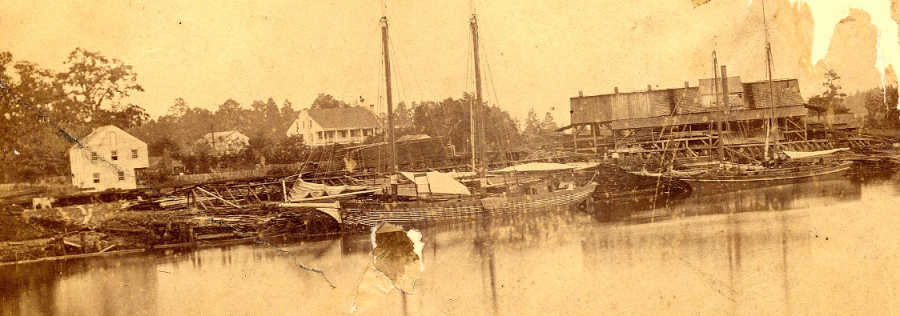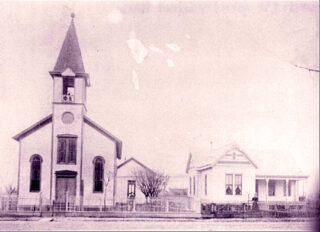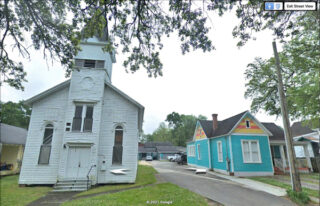My grandmother grew up in Lake Charles, Louisiana, the last port town in southwest Louisiana before the Texas border. I had no idea until a few months ago, when I started researching this chapter of her life, how very different Lake Charles was from where she was born, deep in the heart of French Cajun Country along the banks of the Bayou Teche, where fields of sugar cane gracefully swished in the breeze for as far as the eye can see. Tisolay, my grandmother, was born in 1905 in the newly-sprouted village of Parks, three miles downstream from her mother’s family farm near Breaux Bridge. Her grandfather Adeo, Adeo’s mother Marie-Phélonise before him, Marie Phélonise’s father Elizée, and Elizée’s father Paul before him had been farming there since 1763, when Paul first arrived as a refugee from the war-torn, no-longer-French colony of Acadie, today’s Nova Scotia in Eastern Canada. He and several brothers and cousins got neighboring land grants from Louisiana’s new Spanish government, which was inviting Acadian families known to be tried-and-true farmers to settle the fertile bayous of south Louisiana. The Spanish, who shared both the Acadians’ Catholicism and their hatred of all things British, sent ships to gather the refugees from the shores of England, France, and America’s Eastern Seaboard where the British had scattered them, reuniting and resettling them into a life very similar (except for the heat) to what they had built in Acadia. It was a quiet rural life centered around farming, Catholicism, the French language, and perhaps a stubborn isolationism forged from being pawns in the middle of a turf war in which neither the French nor British governments had merited much loyalty from the Acadians. In 142 years, Tisolay, the last child of 6, was the first to not be born and raised on the family farm.
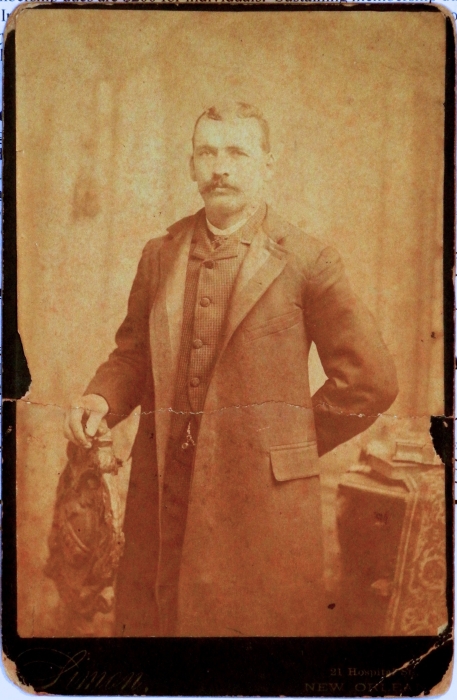
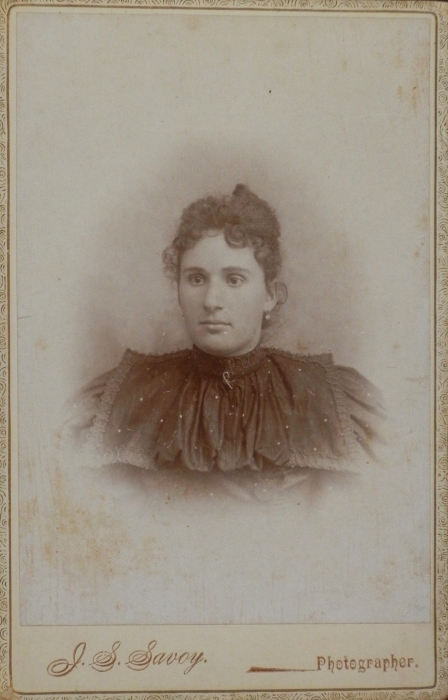
I always wondered what made Tisolay’s father, J. Euclide Champagne, pull up stakes from his wife’s long-held family land, his wife Alicia being Adeo’s daughter. [Her family called her Tiwazzo, Tiwazzo being a phonetic spelling of petite oiseaux, ‘little bird’ in French, just as Tisolay is for petite soleil, ‘little sunbeam’. Like Cirque du Soleil] Anyway, when I first started researching Tisolay’s family farm in Breaux Bridge, back in the 1980s, she told me she didn’t know anything about the move to Parks, except that they had lived in what used to be the Catholic church’s rectory. She found out decades later that it had been sold to a man for $1 under the condition that he remove it from the church’s property . . . which he did, floating it a mile or so down the bayou and hauling it up the opposite bank.
She didn’t know much about the move to Lake Charles either, a few years later, except that it had to do with her mother’s younger sister Mathilde (ma-TEEL) being newly-widowed and left with a young daughter to raise after her husband was hit by a train and killed near Lake Charles.
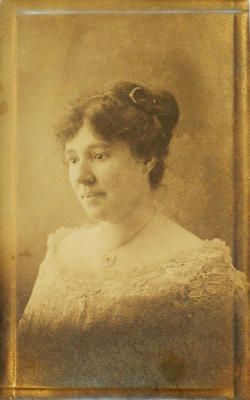
Fast-forward 40-odd years from my time researching the family’s time in Breaux Bridge in the 1980s, to 2020, well into the Covid-19 shut-down, when I have dived into researching Tisolay’s young years in Lake Charles as an escape from the political insanity surrounding the Trump/Biden campaign. Besides my usual starting points on Ancestry.com… censuses, town directories, etc., something popped up on a regular google search of Michel Bourdier’s name, Tisolay’s uncle who was killed by the train. It was a Supreme Court case, an appeal, from Mathilde’s lawsuit against Louisiana Western Railroad for the wrongful death of her husband. When I read the specifics of the accident, I marveled that the railroad company, after initially losing the case, had had the nerve to appeal.
In March of 1911, Michel, a railroad supervisor in Southwest Louisiana, was managing repairs on the tracks of a bridge when he got hit in a freak accident by a train that failed to heed the caution signs to slow down. When Michel saw from a distance that the train was not slowing down, but continuing at a speed he thought the damaged bridge would not support, he ran down the bridge toward the train waving a red flag. When it didn’t slow down for that either, he turned and ran back toward land, but failed to reach it before he was hit. I read to my horror that he had lain awake, broken but coherent, for 4 hours, thrown by the train back up onto the land he’d nearly reached, and at one point had asked one of his crew if the train had wrecked, worrying that he might lose his job if it had. In 3 days, it would have been his 31st birthday. The railroad company’s appeal claimed that it was Michel’s gross negligence for not jumping off the 8-ft bridge, but the Supreme Court was having none of that, and Mathilde was awarded $12,000, part for her and part for their daughter Sophie. Twelve thousand dollars in 1911 was the equivalent of almost 250k in 2020 dollars. A copy of the courtcase and the whole mess surrounding it was attached to Michel’s will, which told me that my great-grandfather, J. Euclide (eu-CLEED) had been the executor of Michel’s will, which would have brought him to Lake Charles.
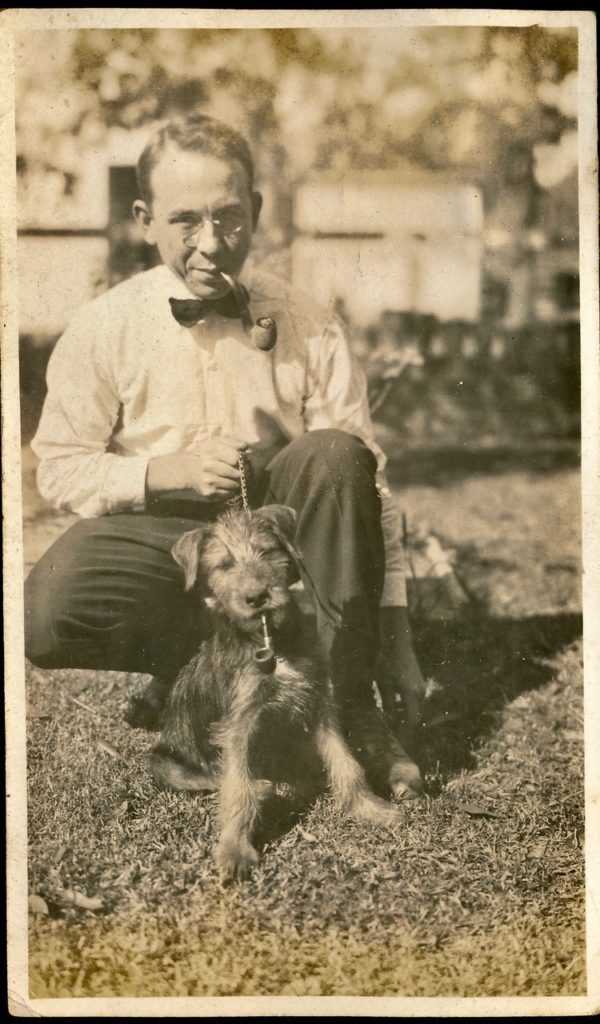
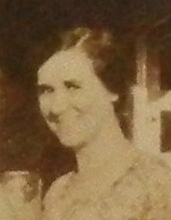
Around the same time, through a question I’d asked another researcher on Ancestry.com, I’d found the granddaughter of Tisolay’s adored older sister Marie-Carmen, a newfound 2nd cousin in Pennsylvania 8 years older than me whose mother had never been willing to tell her anything about her mother’s French Louisiana roots. I was ‘nuthin but’ French Louisiana roots, which seemed to mean a great deal to her, and she and I became good friends over months of in-depth, personal correspondence that, among many other things, touched on a potential girls’ road trip together to Lake Charles. This will no doubt hit the presses of this blog with some force, but going back to the beginning, one of the first things we did was share photos that we had of each other’s grandmothers together as young girls in Lake Charles. In the course of our photo exchange, there were several unidentified ones that we hoped the other could identify. One of hers was of a man whose face was so like Tisolay’s cousin Sophie that it could only be her father Michel, the man killed by the train. Crouching behind his dog with a pipe inside a tiny little grin, it took a second for me to realize that his dog was smoking a pipe as well. Chèr Michel, you look like you had a playful heart. I am so sorry you suffered for so long. I’ve come to know a little bit about you in these past few months of research, 110 years after your death, enough to know how different things would have been for my grandmother, for everyone, had you been able to live out your life and raise your family as you and your young wife had no doubt expected to.
Sometimes life comes wafting up in living color from a simple black and white printed page. When I found Michel and his little family in the 1910 census, living near the lumber mills that lined the river north of town, he and Mathilde were the only white family in a pocket of farming families listed as Black and Mulatto, many of whose grown sons were listed with wage-paying jobs repairing tracks for the railroad. I wonder if this suggests a comfort level with his fellow man across racial and socio-economic lines. That would fit with where he was raised, St Martin Parish, which is unique in that sense. Were these men on the census page with Michel the workers on his team, the ones who pulled his broken body from where he was thrown and stood by him as he lay dying, keeping him company? Was the man he asked whether the train had wrecked, worrying about losing his job, one of these men in the census?.. not just one of his workers but a neighbor who knew his wife and little girl, had seen them playing outside in the yard? Was there someone with him who knew that Michel was a playful man who might put a pipe in his dog’s mouth for a photograph? Were the women in the neighborhood who heard Mathilde weep comfortable enough with the social divide to bring meals for her and little Sophie the first few days, or take Sophie home with them so Mathilde could lose herself in her grief? I do hope so.
☙ ❦ ❧
Tisolay didn’t talk much about Lake Charles, not in the way that would tell me what the town or its people were like, but I remember the first thing she ever said about it . . that she was punished for speaking French when she first started school. The town obviously redeemed itself for her, though, because most of the times she’d talk about Lake Charles, it was about how the city brought music into her life; the piano lessons, the recitals, her teacher, her mother’s slightly scandalized disapproval of some of the popular tunes she and Carmen would play in the front room, but mostly how Lake Charles had loved this talented, charming young girl who showered the town with her music so much that they came together as a community to pay the tuition and board for her to go to college “in the big city” at the New Orleans Conservatory of Music. But that’s about all she ever said about Lake Charles.
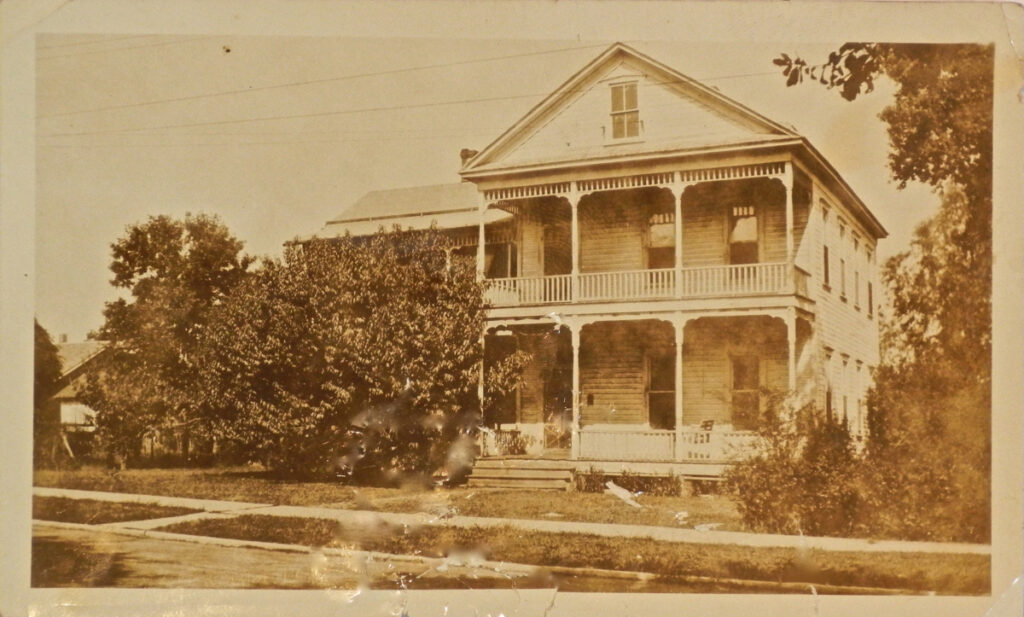
She spoke affectionately of the Moss St house she grew up in, though she never described the inside of it or talked about anything the family did in it. And she remembered her best friends Bernard Levy and Karl Krause from the neighborhood, and Etta Cruikshank from school, though she never said anything about them. She rarely spoke of her daddy, though when she did, it was with great love. He was a gentle man who sometimes worked as a clerk in a store and loved gardening in his vegetable patch. She remembered him waking her up with a cup of coffee in bed, then putting her on his shoulders and bringing her downstairs to start the day. She had a photo of her father in a horse and buggy, and said it was his prize-winning trotting horse. From the look of him in the photo, he was younger and still in Breaux Bridge on his wife’s farm. That’s all she ever told me about him.
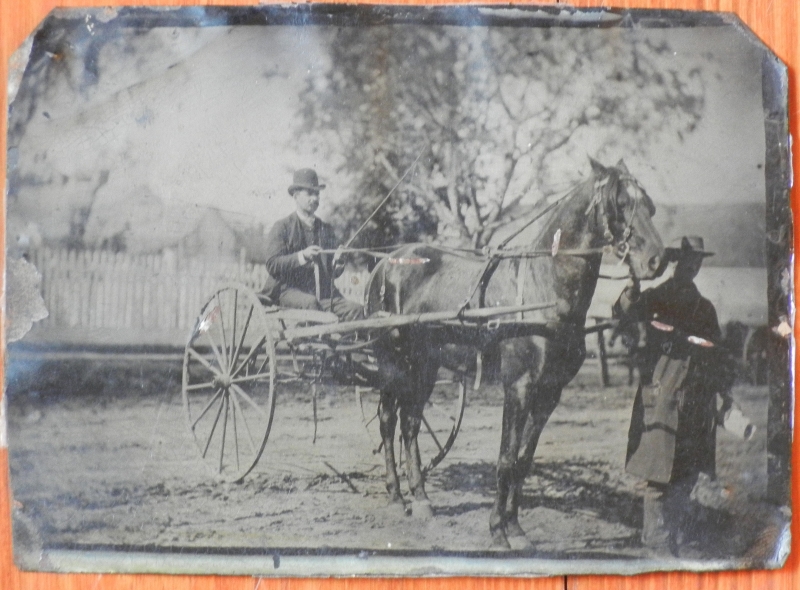
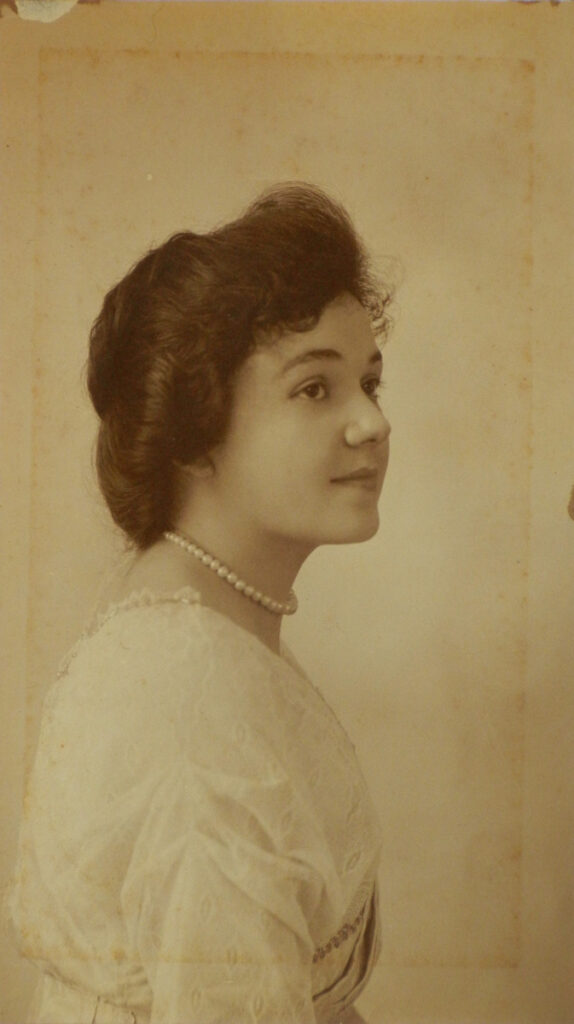
She adored her big sister Carmen, my newfound cousin’s grandmother who was 11 years older. Gentle and sweet, she did things with her baby sister that may have made up for the two brothers in between them who would have spent more time with each other than their much younger sister.
And she loved Tiwazzo who was very much a lady, quiet and refined in her ways, and I somehow got the impression, sad. Nothing dramatic, and certainly nothing Tisolay said directly about her. But Tisolay never described her mother being cheerful, or enthusiastic about something, or engaged, taking part in things, but rather intimated that she was patient and uncomplaining, which begs the question, “about what?”
I knew that Tiwazzo was a French-speaking woman in an English-speaking town, but not until these past months’ research did I know anything about that town or what factors could have caused Tiwazzo’s unhappiness. Lake Charles was a pioneer outpost of lumbermen, loggers, mills and saloons, on a lake whose river system ambled through dense pine forest to the Gulf of Mexico, and whose shores had merchant schooners captained by German/Danish North Sea seafarers pulling in and out, taking Louisiana lumber to the bustling coastal trade route that connected Mexico, Texas, Louisiana and Florida. It was settled by northerners in the lumber industry, “Montana Men” they call them, sorta like our carpetbaggers but without the negative political and cultural connotation that applied in New Orleans, who’d turned their attentions to the pine forests and cypress wetlands of South Louisiana. Several of Lake Charles’ most influential founding fathers were German sea captains who settled down and built their own mills, seeing the potential of joining their northern friends in the lumber business while also having their own fleet of ships to take the lumber to the booming new towns out west. In the 1880s, when the railroad finally penetrated the forbidding Atchafalaya swamp, connecting the major ports of Houston and New Orleans, French Louisiana farmers joined east Texans to form a limitless supply of labor, and Lake Charles became a melting pot of American cultures that would have seemed another world from the secluded, homogeneous French Catholic farming community that Tiwazzo knew.

The railroad brought much-needed prosperity to those financially-stagnant parishes of post-Civil War Cajun Country that had the foresight to bid for a railway stop in their parish. But St Martin Parish, preoccupied at that critical time by the recovery from both fires and hurricanes, missed the opportunity. The old land grants, now on their 4th generation of divisions (and we’re talking Catholic-sized generations here), could no longer support their founders’ descendants, so many St Martin Parish residents used the railroad to find prosperity elsewhere, leaving Bayou Teche for the thriving new job markets to the west. Lake Charles, with its mix of cultural influences, had a reputation as more tolerant of social, religious and racial differences than the rest of French Louisiana which was more embroiled in post-Civil War racial strife.
🎶 Ah, Tisolay, I may have an idea why your Papa left the family farm for Parks, and then for Lake Charles. I tell you what, though. There’s still something curious about why your daddy moved y’all to Lake Charles. Something’s off. I finally found the ‘missing’ 1910 census. The census taker made an utter hash of your names and street number, and the computer entry person did a worse job deciphering the old handwriting, but it’s you. Anyway, it puts y’all in Lake Charles in the summer of 1910, which is odd. If your Nonc Michel wasn’t killed until 9 months later, in March of 1911, then that’s not what brought y’all to Lake Charles.

In fact, I found your Nonc Michel and Tante Mathilde too, with little Sophie Mildred, a few miles upriver from Tisolay and the Champagne family in Lake Charles. And right there, I think I see what brought your daddy to Lake Charles, hoping to give y’all a new life. Look at the occupations. Nonc Michel worked as a section foreman for the railroad. Your papa worked at the Southern Pacific freight depot. At the start of 1905, both families were still living on the Teche, there for both your birth that January and Tante Mathilde’s marriage to Michel 2 months later in March. After that, I don’t know if anyone went first and got the job for the other, but five years later, at census time, they had both left the Teche Country for Lake Charles and gotten jobs working for Southern Pacific Railroad.

I wonder if Tiwazzo knew what this move would mean to her. Because she wasn’t just isolated by her language, was she. She was isolated by her lack of money, now that y’all were no longer under the financial umbrella of your grandfather’s farm. You always said there was never any money, that things other people had or could do, your family couldn’t. You spoke so lovingly about your Papa, the few times you spoke of him, but more than once you said you didn’t remember much about him working, leaving in the morning, coming home, just that he worked in a store at one time, and that his favorite thing to do was to putter in his vegetable garden. You would never have told me this, I know, but my guess is Tiwazzo had to raise a family on very little money with a husband who wasn’t financially ambitious, and possibly had to rely on the help of her bilingual daughters in the first year or so to get marketing done, bills paid, schools lined up for the kids. 🎶
☙ ❦ ❧
But beyond language and money limitations, there was something else, something my grandmother hinted at about her own young years, the one source of unhappiness that ran through her otherwise-happy childhood, that I started to think could easily have had a parallel effect on Tiwazzo’s life. It had to do with the fact that they shared a 2-storey house with Tiwazzo’s widowed sister and her daughter Sophie, Tisolay’s cousin the same age as her whom she never got along with.
It was always a mystery to me. My grandmother had an innate joy, a kindness and manner of diplomacy that could make peace between God and the devil, and she actively avoided criticizing anyone even when they plainly deserved it, with one exception . . . Sophie. By the time I started asking Tisolay to tell me about the treasure trove of photos in her bureau drawer, Tisolay & Sophie, now in their 70s, had lived in different cities for over 50 years. Sophie only came up in conversation every few years, after a call from Sophie, wanting to come visit her cousin in New Orleans and stay for a few days, something Tisolay was always ‘far too busy for’. It amused me how her natural cheerfulness and easy-going patience gave way at the mention of her name, and I mean in an instant, to the scowl and irritable tone of the girl she’d been then. Though it only lasted for 10 or 15 seconds, she made it clear that Sophie’s brash and bossy nature had had a profound effect on her childhood and her home life. They were only a year apart, and would ordinarily have been treated similarly, given similar things, experiences, etc. But Sophie apparently always came first, getting things Tisolay didn’t, the best things, getting to do things, getting her way, etc., and Tisolay never understood why. She’d ask her mother, but all Tiwazzo ever said was, “Ma chère, vous devez vous rappeler qu’elle n’a pas de père”… “You must remember she doesn’t have a father”, which sounds to me pretty lame of an excuse for favoritism severe enough to cause prolonged unhappiness. Apparently Sophie, far from being broken-hearted, milked it for all it was worth, and with Tisolay’s siblings all so much older, Tisolay was the only one on the receiving end of it.
When I went to graduate school near Breaux Bridge and first got to know the relatives on the family farm, I looked Mildred up and we went to lunch. I was surprised to find her quite cheerful in a boisterous way, laughing all the time. But she was also exactly as Ti had painted her, brash and bossy, and seemingly clueless about it. There was something indominable about her; turns out she lived to be 107. Frankly, I thought she was a riot! But Tisolay never could get over it.
🎶Ti, I’m sorry I didn’t grasp the importance of it then.🎶
Still, though, Tisolay had a wonderful, outgoing nature that allowed her to make friends at school and elsewhere, away from home. But Tiwazzo? I’d always sensed that resignation was somehow the subtext to Tisolay’s restrained descriptions of her mother, and now I can’t help but wonder if it had anything to do with the discord between the two girls? Did it go deeper than that? Was there a parallel discord between Tiwazzo and her sister that made having to share her home with her widowed baby sister such a disappointment?
I’ve often wished that Tisolay had told me more about her mother and her aunt, the two sisters who were the women of the house, and the dynamic in the home that caused my Tisolay to feel so slighted, as if being made to feel ashamed of being Cajun French at school weren’t enough. Did the age difference between Tiwazzo, who was only 18 months younger than her older brother Adrien, and Mathilde who came along 11 years later, affect Mathilde’s personality? Was she raised like an only child, with both her mother and Tiwazzo looking after her? Their mother being the youngest of 22, whose neighbors were cousins, all older, did Mathilde somehow not learn what cooperation with others was all about? While Sophie clearly played the ‘dead father’ card knowingly, was part of her nature simply learned from her mother?
Perhaps it was less about personalities and more about the Bourdier money from the railroad settlement. Because I do know that Mathilde had money to spend on her daughter and Tiwazzo did not. It doesn’t seem like Mathilde shared much or was concerned about Tisolay’s feelings being hurt, but I don’t know. I do know that both mothers watched it happen, watched Tisolay’s unhappiness at the hands of Sophie. Did Tiwazzo talk to Mathilde about it? Was Mathilde receptive? Did gentle J Euclide get caught in the middle, perhaps too passive at times when his family needed him to stand up for them?
Perhaps it was Mathilde’s house, making her feel she had the right to dictate the goings-on within the house, and Sophie the right to behave how she pleased. At a typical 1912 price of $2500, she could have afforded it, but the records and Tisolay’s memories suggest conflicting stories. Tisolay always admitted to the genteel poverty of her family, but nevertheless, said that it was her father who owned the house, and that after he died and her mother moved to a smaller place, Tiwazzo had then sold the old 2-storey place to Mathilde. But the records show 617 Moss St as being rented alternately by either J Euclide or Mathilde the entire time both families lived there.
This was not the last life-long assumption of mine that the records would throw into question. Tisolay had never spoken of any other house but 617 Moss, until she graduated from college, which is when her father died and Tiwazzo decided to move to a smaller house. She’d also never spoken of a time when the Champagnes and Bourdiers didn’t live together, which put Tisolay and Sophie together from the start. The 1910 census proved that they had not lived with the Bourdiers before Michel’s death, and Lake Charles’ first directory, published in 1911, proved that they had lived in a different house before Michel’s death, just around the corner at 614 Mill St., facing the Flanders’ beautiful front garden.

It also led me to discover, back in the 1910 census, the family that was in the 617 Moss house, which meant that the Champagne’s smudged address was not a misrecorded version of 617, but 511 Moss St, a few doors further into the next block, it’s side abutting the rear of the Flanders property. Three houses in 3 years? What’s up with that?
But it wasn’t anything I found in the records that told me that the Champagnes had lived in Lake Charles for a good period of time before moving in with the Bourdiers, getting to know the town by themselves and on their own terms. It was something I’d read in the family papers years ago, in the will of Tisolay’s brother, Presley, from 1963, but hadn’t recognized the significance of.
🎶 Ti, do you remember when Presley died, the family papers of his that you got afterwards, the plat of the farm, all that? I know that Granddaddy would have taken care of the business end of things, might have even been the executor, but did you read the inventory of Presley’s things, where one of them was a Lake Charles High School ring from 1908? He would have only been 11, but Beulah was 17. It was Beulah’s ring; she left it behind when she got married, and Pres had kept it. Anyway, that ring means that your family’s move to Lake Charles predated Michel’s death by 3 years or more. You would have only been 3, so I’m not surprised you don’t remember the move, or living anywhere other than 617 Moss. But I’m surprised you don’t remember Michel. He and Mathilde, with little Sophie, only lived 2 miles upriver from town in a community called Goosport, where the river was lined with lumber mills, the oldest one belonging to the family of Daniel Goos, one of those German cargo schooner captains I told you about who became a founding father of Lake Charles. I can’t imagine y’all didn’t visit regularly. You would have known your Nonc Michel from the time you were 3 til you were 6, when he was killed. You don’t remember him at all? 🎶
☙ ❦ ❧
Interesting guy, Daniel Goos. He came from the Foehr Islands in the North Sea, close enough to both Germany and Denmark to be caught in border disputes, and for the early censuses of Lake Charles to refer to his nationality both ways. Capt. Goos brought his seafaring culture to the New World where he shipped other people’s lumber back and forth along the Gulf Coast, until 1855 when he decided to build a lumber mill of his own in… they called it Charlie’s Lake then, just a backwoods outpost of saloons and loggers in the middle of a rich forest of prime lumber. At the time, Jacob Ryan, the man whom Lake Charles’ main drag of Ryan St. was named after, had the only mill there, a grueling, hand-powered operation that heaved forth the lumber that built the town, board at a time. So Goos went back to Germany and brought back shipbuilders and sea captains, sawyers and loggers, and engineers, one of whom was carrying the first steam-powered sawmill Calcasieu Parish had ever seen. Then, because the dense forest that lined the river blocked the wind his schooners needed to sail down to the Gulf, he built a fleet of steamships to tow them out to more open water.
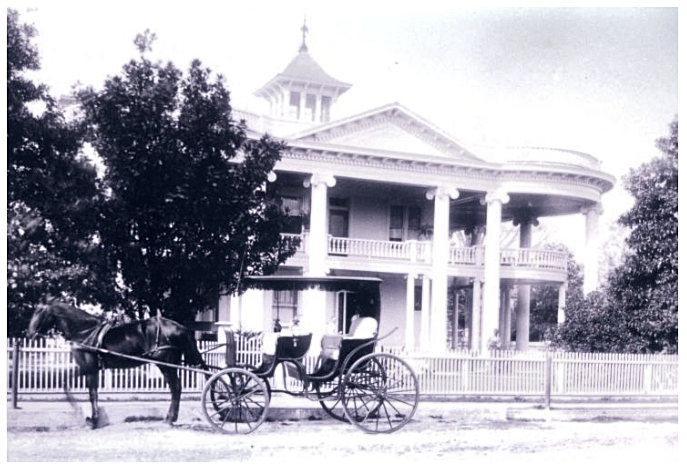
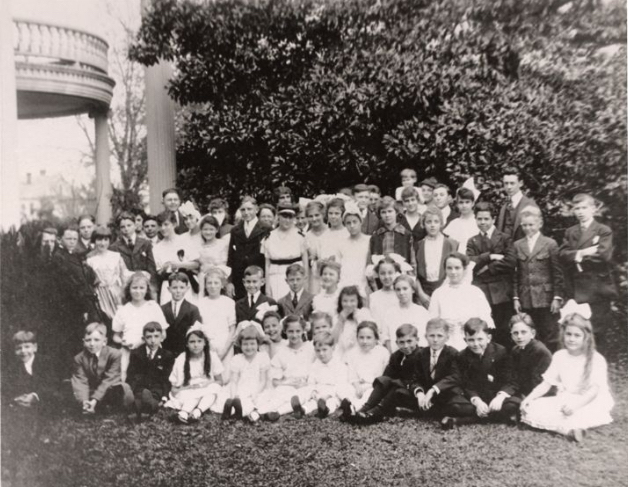
🎶Ti, this guy… he never lived in your neighborhood; died 10 years before y’all even got there, but his thumbprint is all over it, and you, sorta. You remember Della Bel from across the street? Yeah, I know about her. I was looking up something about the architecture of the Bel house, which apparently has quite a history, in this incredible photo archive McNeese has… it’s a college, started in Lake Charles not long after you left, 1939, down past your high school. I found a newspaper photo of a garden party at her grandparents’ house on the corner, with a whole gang of kids, easily 50, in the grass in front of the verandah.
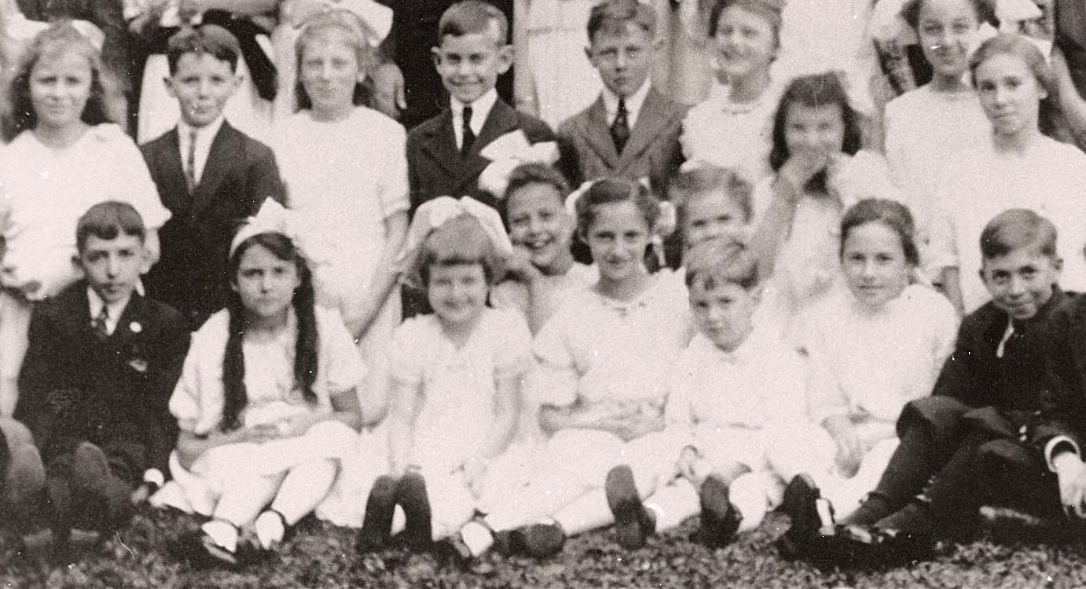
And there you were.
You’re about 8, Sophie’s behind you, over your left shoulder. Della and Bernard are there. I wish I knew what Karl Krause looked like, cuz he’s gotta be in there. You knew Della ended up marrying Karl’s big brother Rudolph, right… while you were at the Conservatory? That was when the Krauses were still ‘just plain folks’ next door, or so it would’ve seemed to you, before Mr Krause built the Shell Beach place that really reflected his wealth. Having these two rich families on either side of you, in and out of their homes, I marvel at how egalitarian childhood is. Still though, you could never fall in love outside the Catholic faith; Tiwazzo would never have stood for that. And all the families around you were German, either Jewish or Lutheran; they probably felt the same as Tiwazzo, about the Catholics.
Anyway, Della’s grandmother who threw the party, Mrs. Bel, she was one of old man Goos’ daughters, 51 by then. And Mrs. Flanders, on the corner across from them?.. She was another of Goos’s daughters. Mr. Flanders’ sister Florence married Daniel Goos Jr.; they were 2 blocks away. And Walter Goos behind you, that stately old place with the Juliette balcony?.. his back yard backed up onto the Krauses’ yard next door. They’re everywhere. Goos’ kids read like a who’s who list of Lake Charles’ up-and-coming captains of industry, the earliest builders of the magnificent mansions of Broad St.
Apparently the Charpentier District has a section . . . Did you know that your historic-district neighborhood has a name, the Charpentier District, with a very interesting origin? Goos brought a lot of very talented shipbuilders and carpenter-builders to Lake Charles who, owing to a fluke absence of decent architects in the city, were free to compete with one another, adding design features to patterns and building the grandest homes they could think of. (I’m really glad Mother drove you around there those last few times you evacuated with her. And I’m glad you went with her and not with me; I think it made her feel good, something she could do for you.) Anyway, the Charpentier district has a section known as Germantown, several blocks up and down Moss St and Ford St, and you were smack in the middle of it. Goos brought so many settlers from his homeland during the years of that neighborhood’s expansion that he founded a church for them… in their neighborhood , not his. Remember the little church on the street behind you, around the corner, St John’s Lutheran? It’s been chopped up a little bit, no longer in use since the new church was built, but it’s still there.
Mr Fitzenreiter across from the church was the son of Captain Charles Fitzenreiter, one of Goos’ German immigrants, who moved across from the church. And who was his mother whom the good captain married? Goos’ eldest daughter Barbara, of course.
You know who else came across with Goos from Germany? I don’t know how many of these names you recognize as neighbors, but your Papa would know the name of Peter Platz. Half the neighborhood did, considering he lived next door to the Goos children when they were growing up. 🎶
Peter Platz was a young man of 21 when Goos first brought him from Germany in 1855, the engineer with the steam-powered equipment which Platz installed the following year when he built Lake Charles’ first industrial sawmill for Goos. He lived for several years in Goosport, north of town, as a single man in a boarding house next door to Goos and his large family, watching the schooners pulling in and out from the wharf, loading up amidst the hubbub of the mill. His sister had come across as well, settling into the Goos compound near her brother and raising a family with her sailor husband. Also in the Goos compound, from Foehr Island and somehow related to the Gooses, were several members of the Brudersen family, one of whom, Agatha, Peter Platz married.
Platz built his bride a house at the corner of Moss and Mill in an area of undeveloped land where many of his German countrymen were settling. It was situated some 3 blocks east of Ryan St., named for Jacob Ryan, the original founding lumber miller of Lake Charles I told you about. When Platz’ wife presented him with a baby daughter, they called her Babette after his sister Barbara who, freshly widowed, would soon marry the 60-yr-old widower Jacob Ryan… who, despite already having had 15 children, would give his new wife 2 more.
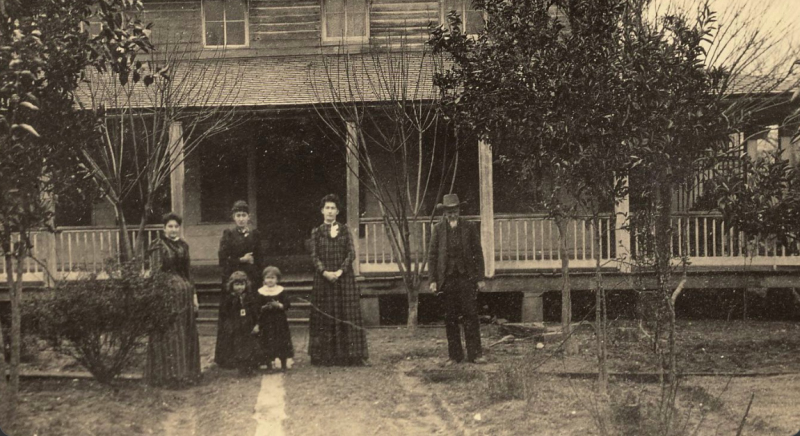
It appeared to be a rather peaceable merging of the two families in a photo of Barbara’s 3 daughters, now grown with daughters of their own, and the old man, step-Papa Ryan in front of the lakefront house where he raised them from their early teens. One of his step-daughters poignantly named her child Inez, after the 4-yr-old daughter he and their mother had just lost the year before.
Some time in the 1890s, Platz built two rental properties on either side of his corner house, one to the east on Mill, the other to the south on Moss. A decade or so later, the Champagnes moved to Lake Charles around late 1907 or early 08, and rented a 2 story house at 511 Moss near Pine, half way up the next block from the Platzes, on the other side of the big Flanders house on the corner.
☙ ❦ ❧
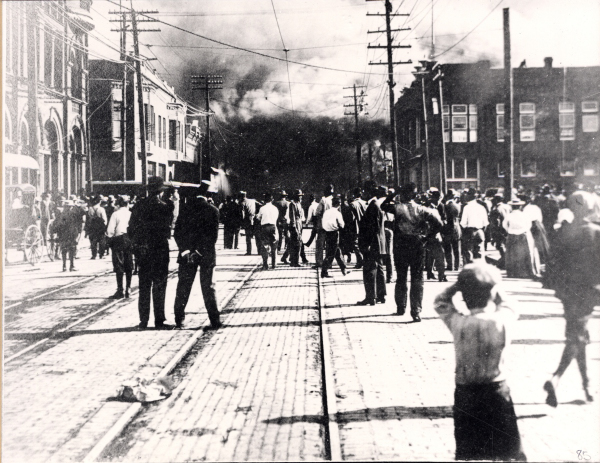
On April 23rd of 1910, late on a hot, unusually windy Saturday afternoon, the elderly Platz, long widowed and living with his daughter Babette, now 36, may not have been up for the walk he saw everyone making from his window, following the smoke. But if he was, he saw, several blocks south down Ryan St, a sky-high black and red curtain, behind which the heart of the town he’d played a pioneering role in creating was burning to ash on the ground.
The Champagne family from the next block up very likely would have made the walk. They’d have had to walk a block down Ryan, to the bend at Division St, to get a straight-shot view of the fire, but when they did, their view would have been on one block further back than the photo of the fire I just showed you, with the boy whose hands have gone up to his forehead in anguished disbelief. I can imagine J Euclide, even if he were working at the freight depot on Saturday, being allowed to work around the schedule of incoming trains enough to leave the depot to see what everyone was talking about, looking down Ryan and seeing for himself the smoke just 3 blocks down, a gathering crowd watching helplessly. What must have been his instantaneous mental calculation about the angle of the wind and whether his home and family were in the fire’s path. I can see him going home to check that all his kids were accounted for, then taking his wife, little Stella, and whichever of the kids weren’t off on their own with neighborhood friends (God, what panic must have strangled his heart over whoever was missing), to get as close to the fire as they dared to assess how much danger their own house might be in.
🎶Aw, Tisolay, did you see it? The older kids were 11 through 19… Beulah’d just had her 19th birthday a couple weeks before… but you were only 5. Did you understand what was happening? How could you not, given how everyone around you was acting, crying, or staring mute, many yelling directions, jumping into action, men with horses and wagons full of hoses and equipment galloping by. And closer to the fire, women screaming for help to load wagons with valuables from homes in the fire’s path, or just dragging them out onto the streets. I don’t suppose your Papa still had his horse, huh? The Sanborn maps didn’t show any stables or barns on the small properties your Papa rented, and it’s not like you needed one like you did on the farm, being miles from church and school, etc. In Lake Charles, you could walk or take one of the new electrical streetcars everywhere you needed to. Unless the sreetcar tracks were on fire. 🎶
Months later, with a terrible housing shortage in the city and many well-to-do families evicting tenants to move into their own rental properties while their homes got rebuilt, old Peter Platz did one of his last pieces of business before his death when he rented his little Mill St. cottage to J Euclide, whose family had to leave their spacious, 2-storey house further up the block for a place that was much too small for a family of 7.
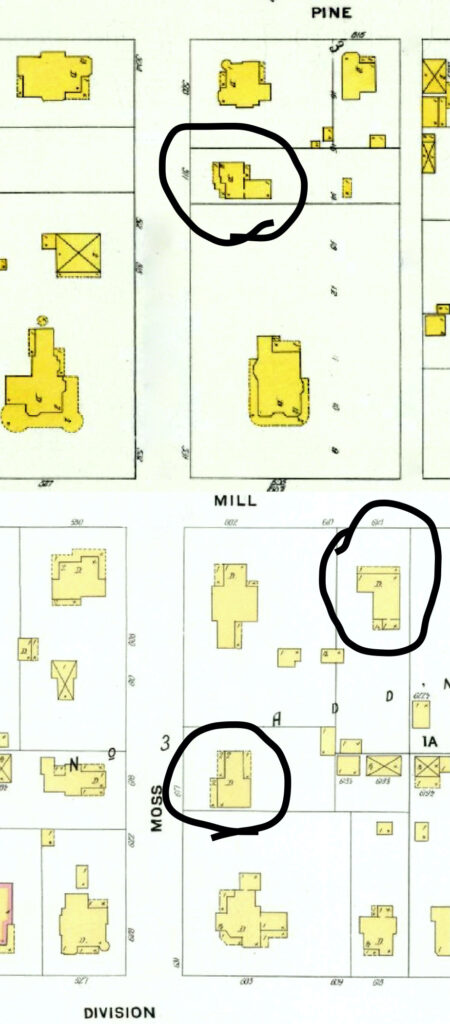
👈 Top . . . 511 Moss St, May 1910 census – The address in the 1910 census that I thought was a smudged version of 617 Moss, Tisolay’s home address for as long as she could remember, wasn’t an error. The Champagnes lived at 511 Moss St, a 2 story house behind the Flanders house on Mill, at the time the Bourdiers were in Goosport.
The census taker found a devastated city in chaos from a fire only a month before which gutted the city and threw many of its residents into homelessness. City Hall, the Courthouse and jail, and the Catholic church, convent and school were destroyed, as well as the majority of the business district and many of the oldest homes. But civic leaders and lumber magnates quickly pulled together and threw their resources into an ambitious recovery plan, emergency measures kicked into high gear, and a full throttle effort to rebuild and update went underway. Hotels, boarding houses and families whose homes had been spared were taking in families who’d lost everything. Every source I’ve read on that time period describes it as remarkable.
👈 Middle . . . 614 Mill St, 1911 directory – The reason for leaving their two-storey home is likely related to the fire, possibly because rents increased, or the owners needed to move in, or the owners asked J Euclide to vacate to the smaller place in favor of a larger number of homeless people. Whatever the reason, in early 1911, he rented Platz’ Mill St property, a small 1-storey house around the corner from their old house that must have barely fit his family of 7. He may well have been there for only a short time, because it was around this time, in March, that Michel Bourdier was killed and his wife left a widow. Since they were not in Lake Charles proper, the directory did not include them, but it’s likely they’d all moved into 617 Moss together by the end of that year.
👈 Bottom . . . 617 Moss St, 1913 directory – Possibly less than a year after old Peter Platz rented his tiny Mill St cottage to the Champagnes, J Euclide moved the Champagne and Bourdier families into 617 Moss, the Platz’ other property on the south side of the Platz home, where they would be for the next 15 years. Only it was Babette, now living alone, whom he’d have rented it from.
I’d imagine Tisolay knew Miss Babette, who would have been in her late 30s when the Champagnes moved into first one, then the other of the Platz rental properties. Babette never left her father nor married, and lived next door to the Champagnes until Tisolay was 16, when she died. The Platz successions, Babette’s and her father’s, cleared up the mystery of who owned 617 Moss. Peter Platz passed the properties to his daughter who, when she died ten years later, passed them to her cousin, Amanda Janssen, who lived a block down, behind the Division St grocery. In 1938, long after the Champagnes were gone and Mathilde did finally buy the house, it would have been Amanda that she bought it from.
🎶I don’t know if you knew Amanda, who was about the same age as her cousin Babette, but Carmen did. They were clerks together at Calcasieu National Bank. And, of course, Amanda and Babette’s mothers, both Brudersons, were Goos’ cousins from back on the Foehr Islands. I doubt they were in the picture of their Aunt Katherine’s garden party, being a kid’s party, but that party would have been around the time Miss Babette rented 617 to J Euclide, or shortly afterwards since Sophie’s in the picture and apparently no longer in Goosport… late 1912 , 1913. You look to be about 8, though, so y’all were only just adjusting to a two-family household.
The 1910 photo of the whole family, when y’all were in Breaux Bridge visiting Yepop (Tisolay’s grandfather Adeo, ‘Yepop’ being a weird sorta short for Vieux Papa, old Papa),would have been during the time y’all were still living in the first house, behind the Flanders property, across from Della. I don’t know, though. There’s something about it. You’re definitely 5, but look behind you; that’s an iron spike fence, with a bit of it going up into an arch as if it were a gate. There aren’t any iron fences in rural cane country; that’s a city thing. And it’s a pretty well-to-do city thing, too.
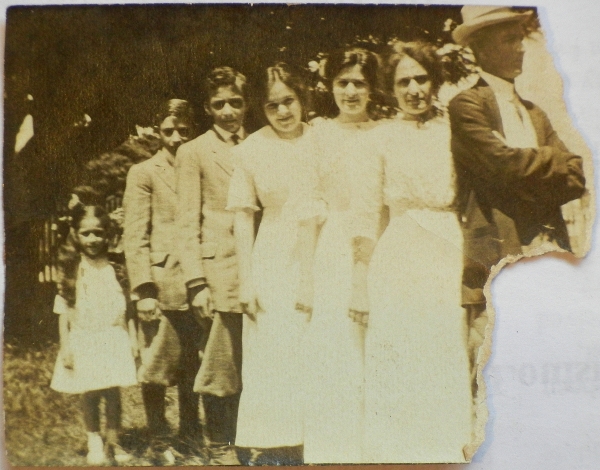
Wait. You know what? I’ve seen that fence. I’ve seen it 100 times on Google Earth since the hurricanes, looking for updates on the repairs to your house. That’s the fence around the Flanders house; their back fence would have abutted the side of 511 Moss. Y’all aren’t in Breaux Bridge in that shot; you’re standing in the back yard at 511 Moss St, with the Flanders’ back fence behind you. I know exactly where that is! 🎶
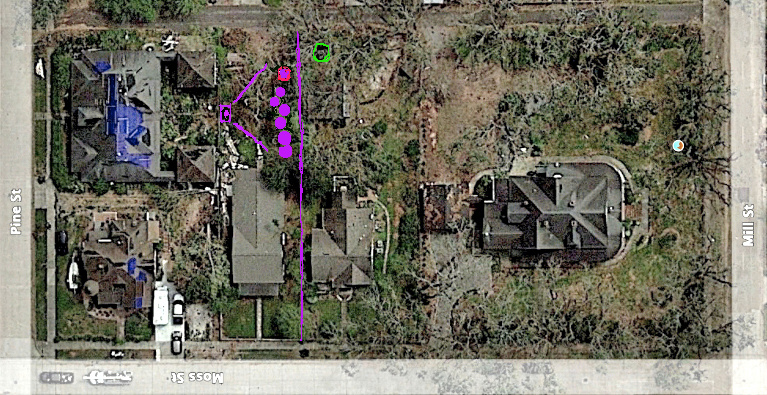
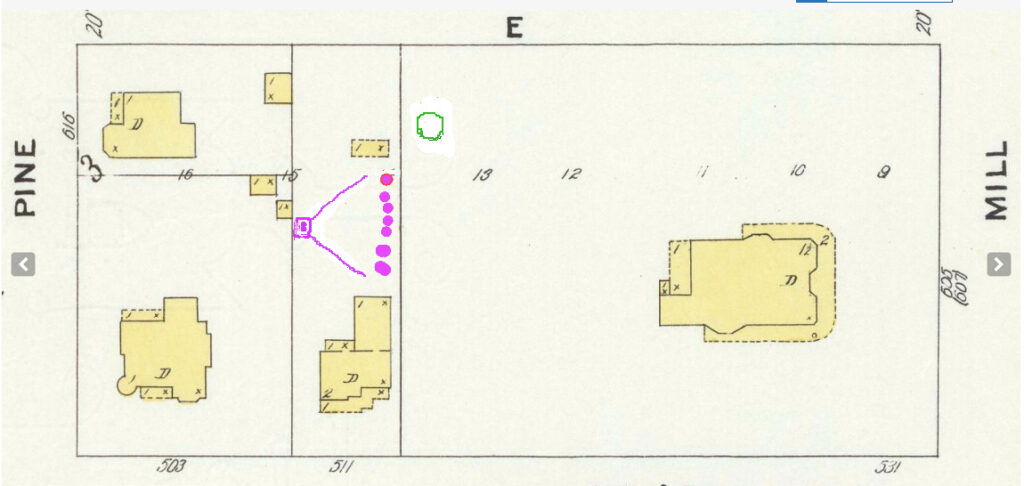
Seeing the outline of 511 Moss St on the 1909 map, and knowing that Tisolay lived there the day the Sanborn people’s mapmaker was measuring the house, walking around it, drawing it out in a notebook… seeing her as a 3-yr-old, possibly standing on a chair watching him from the front window, created mixed feelings in me. I thought of the freedom she was soon to lose, as well as her confidence in her own importance under Mathilde and Sophie’s dominion. I thought how ‘small-town’ unique it was that, despite the 3 moves it took before settling into 617 Moss, she never needed to stray farther than a block’s radius from her original neighborhood, neighbors or friends. I thought of the first exploration the family would have made of their neighborhood from that house, in the first days after stepping off the train, during breaks from unpacking or after J Euclide came strolling home from the train depot. You would have only been a toddler holding someone’s hand, maybe Carmen’s, occasionally riding on Tiwazzo’s hip or J Euclide’s shoulders.
🎶Aw, Ti. I know you had plenty of happy times, and I don’t know why the whole issue with Sophie makes me so sad. But come to find out, there was a whole period of time when you and your family’s lives had not yet been tied to the fate of the Bourdiers, when Tiwazzo was the mistress of her own household, when your family was free to commune with your new city on your own terms… and you were too young to remember it. It was only 3 or 4 years, but it was the life y’all would have had, your own, had its course not been hijacked. That’s probably putting it too strongly. Perhaps life was meant to take its structure from the string of little highjackings that the world presents us. I know that my need to get your story written before I die , like any artistic drive, requires a self-absorption and shift in social priorities that comes at the expense of anyone we live with, and it does worry me. Or maybe I just yearn so badly for you to remember the days you had before Sophie because I’m only just now getting my first glimpses of where you grew up, and every little discovery is so poignant for me… digging for pennies and finding diamonds.🎶
☙ ❦ ❧
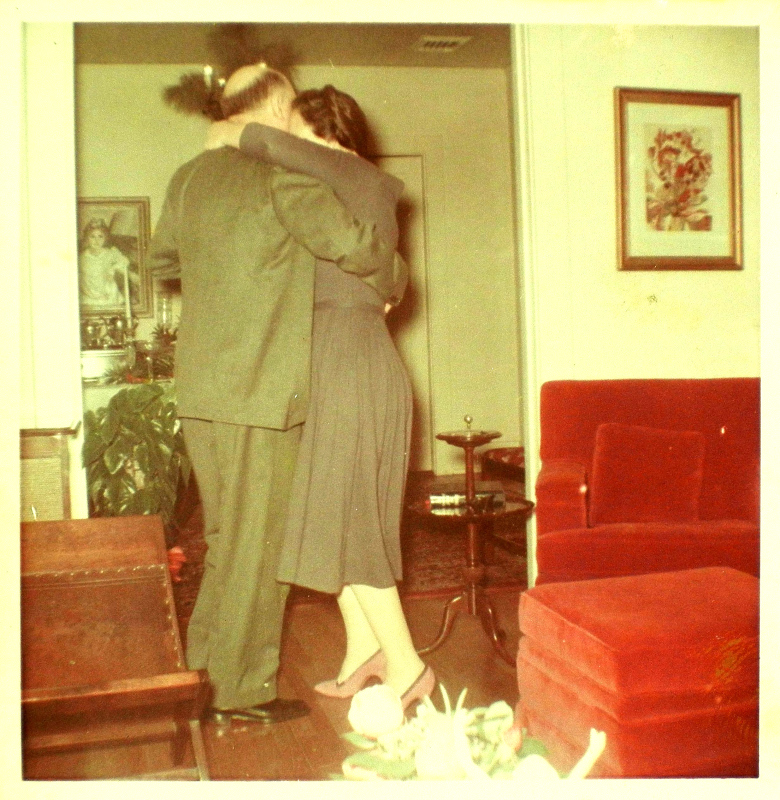
When Tisolay died, I thought that surely, if ever there were two people so connected that one would ‘visit’ the other when they died, to say goodbye, it was Ti and me. But nope. She was gone, I mean gone gone, dancing in Granddaddy’s arms again. And I understood. That was 17 years ago, the day before Mardi Gras in 2004 (yeah, yeah…because she knew that if she waited a day and died on Mardi Gras Day, Bultman’s Funeral Home, right smack on the St Charles Ave parade route, would never have been able to get out of their own driveway, let alone through the parade and its crowds to get to her). But last year, when I finally started researching the long-awaited Lake Charles chapter of her life, the mystery years I didn’t know anything about, I felt her very near me, albeit a feeling I knew perfectly well was created in my own head and heart. But when I found Carmen’s granddaughter and we got to know each other’s version of our family. . . wow! I could almost feel Tisolay’s breath purring in my ear. And then I knew, without any doubt, what she wanted me to do.
The more I uncovered about Tisolay’s life in Lake Charles, the more I realized how grateful Ti was to her big sister Carmen who’d been so devoted to her. I think Carmen understood how Sophie made Tisolay feel, and how inescapable it was, the forced pairing that existed at home and probably also out in the social world, when one girl couldn’t be invited and the other left out. Carmen probably also understood something of the dynamic within the household that kept the problem between Tisolay and Sophie alive and unresolved. And since Carmen did not marry and leave home until she was 26, she was there for her during Ti’s difficult early teens until Tisolay was halfway through high school.
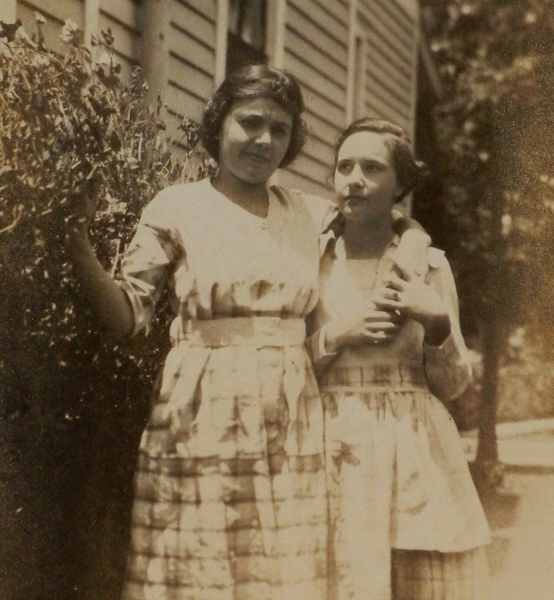

Even after Carmen married, her new husband only took her a few doors away, just around the corner, and the girls stayed close. A few years later, photographs show that Carmen had her own piano. Marrying into a relatively well-to-do family, she may have had it since her marriage in 1920, and if so, may have allowed Tisolay to bring her music there during those few high school years after Carmen left, out from under the pall of Sophie and Mathilde. (Good lord. It never occurred to me, but all the recital programs Tisolay kept had Sophie among those playing, and at a somewhat more advanced level. I knew Tisolay had started taking piano lessons at a later age than most. Had the Moss St piano been Mathilde’s, and piano lessons been one of the things that Sophie got and Tisolay didn’t? And once Tisolay did start lessons, did Sophie’s dominance extend to the piano as well?)
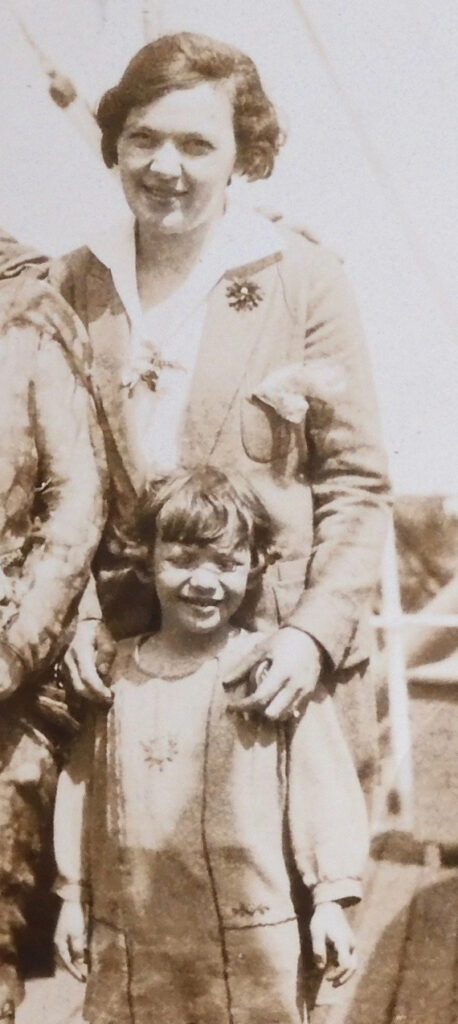
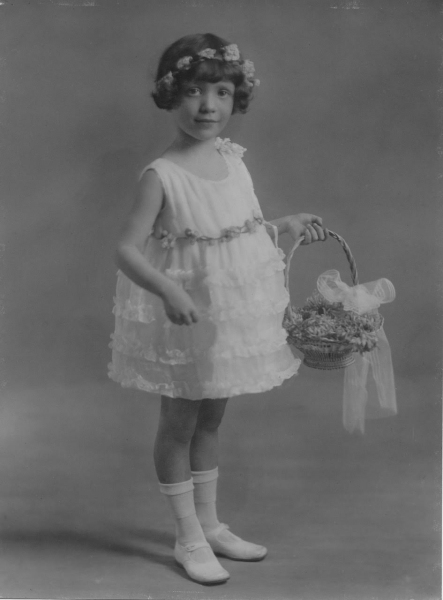
In any case, Tisolay went away to college at the Conservatory in New Orleans the same month that Carmen gave birth to her daughter Betty, and I can well see Ti joyfully making regular trips home by train, which only took 5 hours, repaying Carmen’s kindness and spending time with little Betty, taking her under her wing, perhaps exercising on tiny Betty the budding teaching skills she was learning.
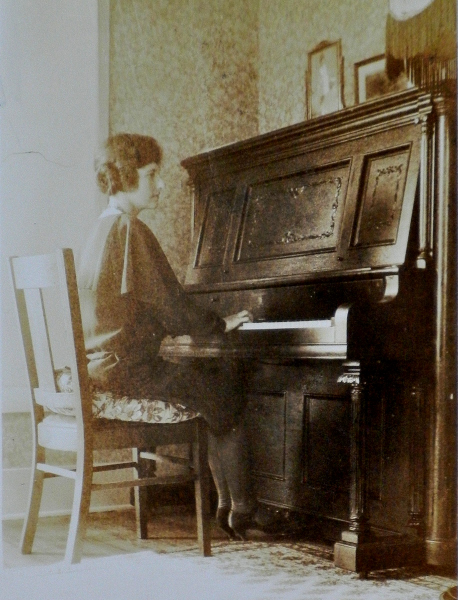
After she graduated, moved back home, and helped her newly-widowed mother move to the little corner house across from Carmen, she announced herself as a piano teacher in the Lake Charles newspaper and began teaching. Betty, now 4, officially became one of her students, and the piano forged the bond that would link them together for life.

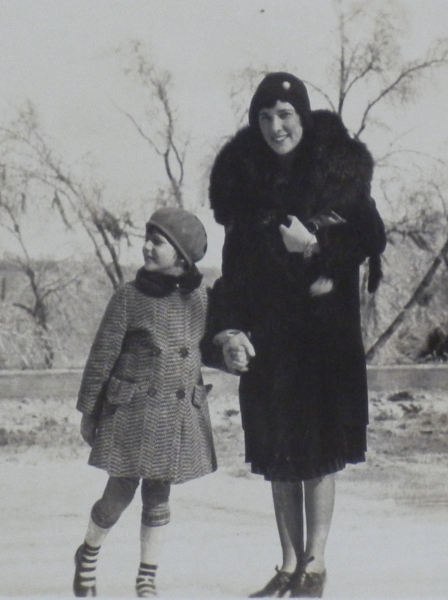
But Granddaddy lived in New Orleans, and he was champing at the bit to get Ti to marry him, so long had she been dangling the unspoken word “yes” over his head, just out of reach. So after only 3 years doing what she loved, teaching in Lake Charles, Tisolay married Granddaddy, with Betty as flowergirl, and then left Lake Charles for good. No one had any way of knowing that Carmen would die 3 years later, at the young age of 40, and change little Betty’s life forever.
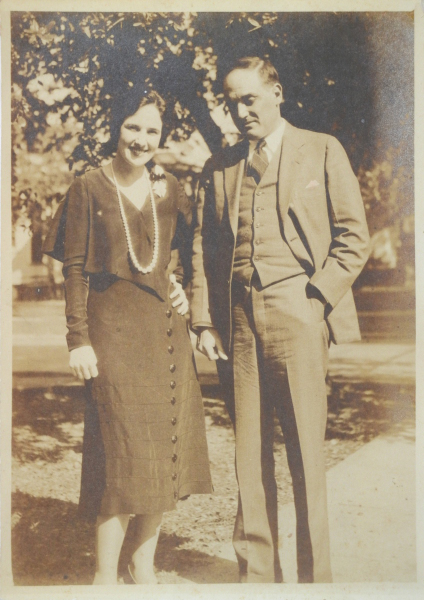
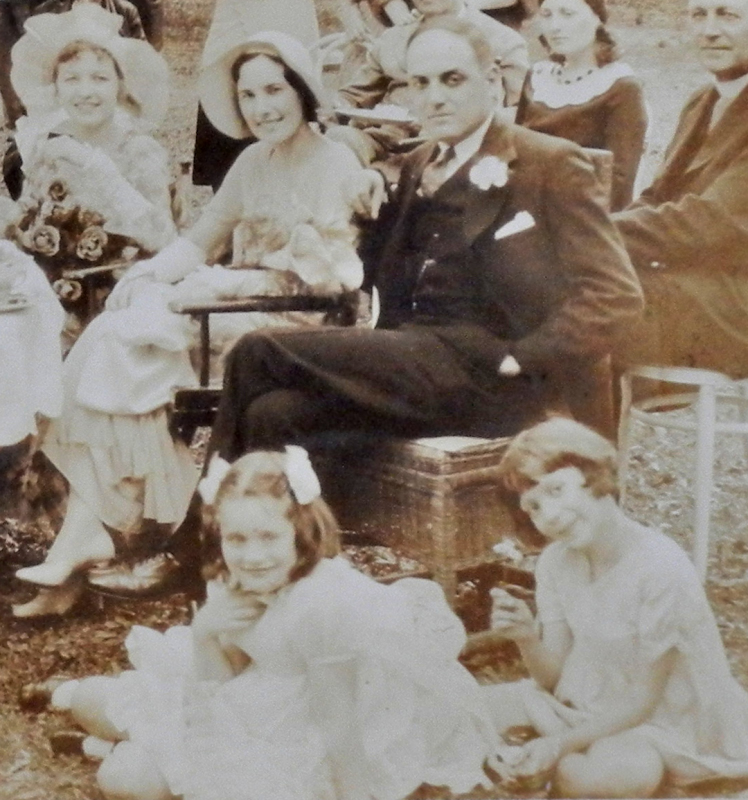
Less than 2 years after Carmen died, Betty’s father remarried, leaving Betty in a lonely sadness apparent enough for Granddaddy to suggest to Tisolay that they adopt her. I don’t know how far that went, but Betty’s father and new wife kept her with them, and she had grandmère Tiwazzo across the street. But 6 years later Betty went off to college at the Eastman School of Music in Pennsylvania and never looked back. She met her husband there, Tisolay and Granddaddy went up for the wedding, and they kept up with Tisolay over the years. Betty sent her programs of recitals and school photos of her son and daughter as they grew up, modern school portraits only a few years older than mine that Tisolay never told me anything about. I was only familiar with them because they were in with the unsorted mish-mash of older photos, thousands of them, in Tisolay’s overflowing bureau drawers that I loved rooting through.
I was several weeks into my correspondence with the cousin I met on Ancestry.com when it hit me like a thunderbolt that that was her and her brother in those little school shots. Tisolay and I had labeled and sorted all her thousands of photos after Granddaddy died, and though I hadn’t seen them in the 30 years since, I knew right where to go to find them. I spread them out across the bed and sent her a single shot of them all together so she’d have a sense of my having known of her my whole life. I wonder if Ti knew that she was one of the only people Betty kept up with from Lake Charles, and that such was the sadness of her childhood that she never would tell her kids anything about it or her family back in Lake Charles… would refuse if asked. In any case, Tisolay felt she never got the chance to repay all that Carmen had done for her, and she’s telling me now, loud and clear, that I ‘m to ‘pay it forward’ to Carmen’s granddaughter and give her back her heritage.
